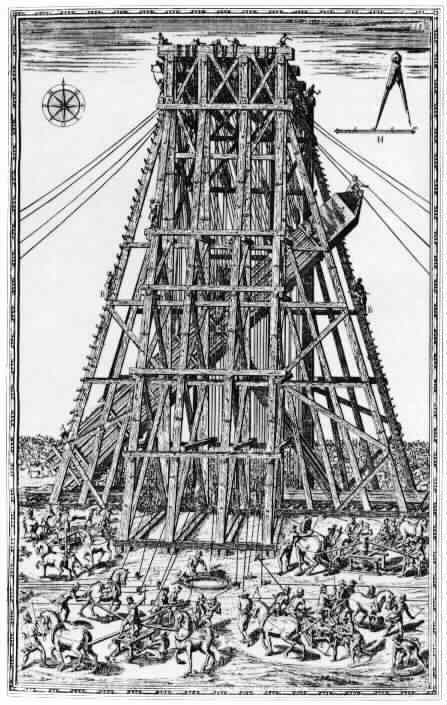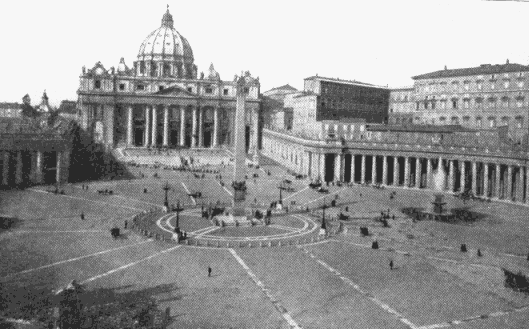Moving an Obelisk
Today, we marry architecture to engineering and move an obelisk. The University of Houston's College of Engineering presents this series about the machines that make our civilization run, and the people whose ingenuity created them.
The emperor Caligula brought a great stone obelisk from Egypt to the Circus Nero in Rome. It was a 327-ton monolith, 83 feet long. 1500 years later, in 1586, it lay half-buried in dirt, not far from the Vatican. A few years before, Pope Sixtus V had told the young architect Domenico Fontana: \ "Too many Christians have been martyred in the shadow of that stone. St. Peter himself died there." Now Sixtus ordered the obelisk moved to the Piazza where St. Peter's Basilica was going up.
Renaissance engineers had to do what the ancients had done before them; but they had to use less labor-intensive means. The obelisk had to travel only 275 yards. But picking it up and laying it down were the hardest part. They might just as well have been shipping it across the sea.
The Vatican solicited proposals for the work. Fontana bid on it, but he had little hope. He was already working on St. Peter's dome, and he was younger than the other bidders. Yet he had the best plan for doing a terribly difficult job. In the end he did the job. Later, he wrote a fine illustrated book about it. The book reveals him as a new and more sophisticated kind of engineer and as a superb organizer.
The move took 6 months to plan. The obelisk was as fragile as it was immense. Human and animal power had to be carefully focused. Fontana built timber towers on either side and strengthened the obelisk itself with metal bands and wooden beams. He wound three-inch ropes on forty huge capstans -- each one powered by four horses. He planned to lift the obelisk between the towers, turn it on its side, lower it onto rollers for the trip to St. Peter's, and then reverse the process.
All this took the precision of close-order drill and absolute silence. Fontana allowed only two sounds: a trumpet blast to begin a movement, and a bell to end it. Two hundred years later, writers began spinning yarn around that part. We read that he built a gallows on the site to punish any disturbance. When the ropes jammed, a sailor was supposed to have broken silence to suggest wetting them down. The story says he was saved from hanging when the ropes came free at the last moment.
And so Fontana's feat grew larger in its legends. Yet he was a great engineer -- among the first to use the title Civil Engineer. To move the obelisk, he took the use of block and tackle to a new level. Egyptians may have moved the same stone, but Fontana did more. He transformed the field of architecture by wedding it to the new techniques of analytical mechanics.
I'm John Lienhard, at the University of Houston, where we're interested in the way inventive minds work.
(Theme music)
Dibner, B., Moving the Obelisks. Cambridge, MA: MIT Press, 1970.
Clark, R. W., Works of Man. New York: Viking Press, 1985, p. 57.

Image from Moving the Obelisks, courtesy of the Burndy Library, Dibner Institute for the History of Science and Technology
Fontana raising the obelisk

The obelisk, as it was shown standing before St. Peter's Church in Rome, in the 1911 Encyclopaedia Britannica